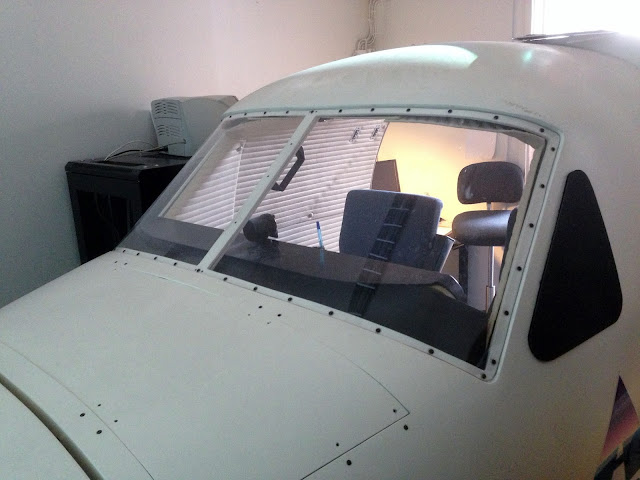In addition I've now also flown my VFR Navigation Progress Check, which was the last flight (in the CPL syllabus) with the Cessna, 172 in this instance. The aim of the flight was to check that my cross-country flying, flight planning and airplane handling are in a level expected at this point from a commercial pilot student. We basically did everything one can do with a small plane, diversion exercises, simulated instrument flying, low-level navigation, sudden engine failures and forced landings, touch-and-go landings, spot landings to uncontrolled airfields and radio navigation. Needless to say, the flight was quite exhausting!
 |
| Taking off from Malmi runway 09 on a rainy morning. |
It has been increasingly rainy for the past week, which has lead to unfortunate cancellations. On top of that there was a battery-problem that grounded our plane for a few days, so this week I've only gotten airborne on one day!
 |
| The view from the back seat at about 2500 feet. |
The only flight I got to fly was a combined basic instrument & traffic circuit exercise, in which we flew to Lappeenranta, did the traffic circuits there and then flew back. We usually conduct these flights so that there are two students on board. The other one flies there and the other one flies back. In this case I was sitting as an observer on the first leg and then flew back to Malmi.
 |
| VFR on top, at 4000 feet. |
The flight to Lappeenranta had some awesome scenery involved since we flew on top of an overcast layer of clouds for most of the time. At some point it seemed the random open spots started to disappear so it was necessary to dive below the layer.
 |
| A Ryanair B737 landed in Lappeenranta right after us. |
On this flight it finally seemed that the radio navigation exercise with instrument goggles on didn't take that much capacity and I could actually enjoy the flight. I think the careful flight planning also did its part in reducing the workload. Or maybe it is the relative stability of the Piper compared to the Cessna.


















